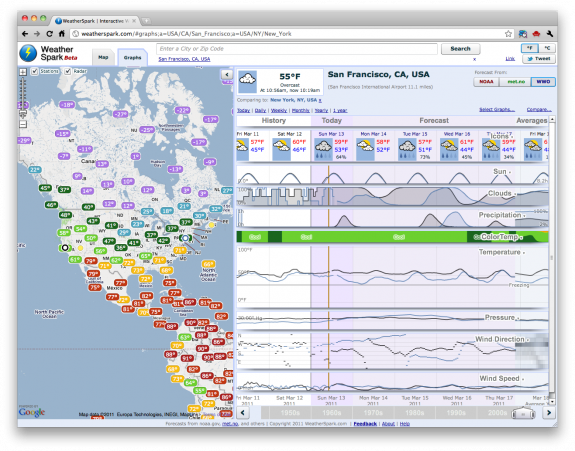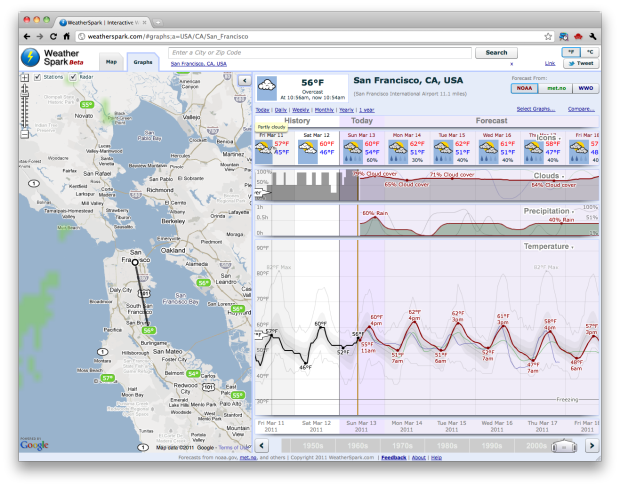You know Matthew Ericson’s simple weather mashup? It shows only what you need to know for the day. WeatherSpark is the the opposite of that.
WeatherSpark is a new type of weather website, with interactive weather graphs that allow you to pan and zoom through the entire history of any weather station on earth. Get multiple forecasts for the current location, overlaid on records and averages to put it all in context.
See weather data all the way back to 1948, compare multiple cities, see historical hourly minimums and maximums, and see forecasts from three different sources. By default, you’ll see cloud cover, precipitation, and temperature, but you can also view solar elevation, pressure, wind direction, and wind speed.

The interface is still rough, and it has that programmer’s feel to it where it’s about spitting out as much data output as you can. I don’t imagine ever needing to know this much about the weather, but it’s fun to click around for the sheer amount of graphage going on. You can also pretend to be a weatherman in your living room.


 Visualize This: The FlowingData Guide to Design, Visualization, and Statistics (2nd Edition)
Visualize This: The FlowingData Guide to Design, Visualization, and Statistics (2nd Edition)

Understanding that it wouldn’t be trivial to do in HTML5, however it is a shame the interface is flash and therefore won’t be available on iPad.
The shame is that the iPad makers refuse to acknowledge the internet’s most popular media formats.
Ignoring the iPad for a second, I can’t use WeatherSpark on my Android phone either (there is a Flash player for some versions of Android but performance is glacial at best). Blackberry? – nope. Windows 7? – nope.
I can’t wait till we are rid of flash and it has a role in niche areas only.
Great site. Can you get the radar to time lapse so you can see the direction storms are moving?
Agreed, it needs some polish (I tried a few things that caused it to go wonky).
But in general I like that data-dense interface. And they’re doing some cool things – like if you expand the time-slider at the bottom right, the interface changes to be relevant for the time period. E.g. in short windows of time you get the daily variations in temperature. But when you expand a bit, it switches to daily medians. Clever… and not trivial.